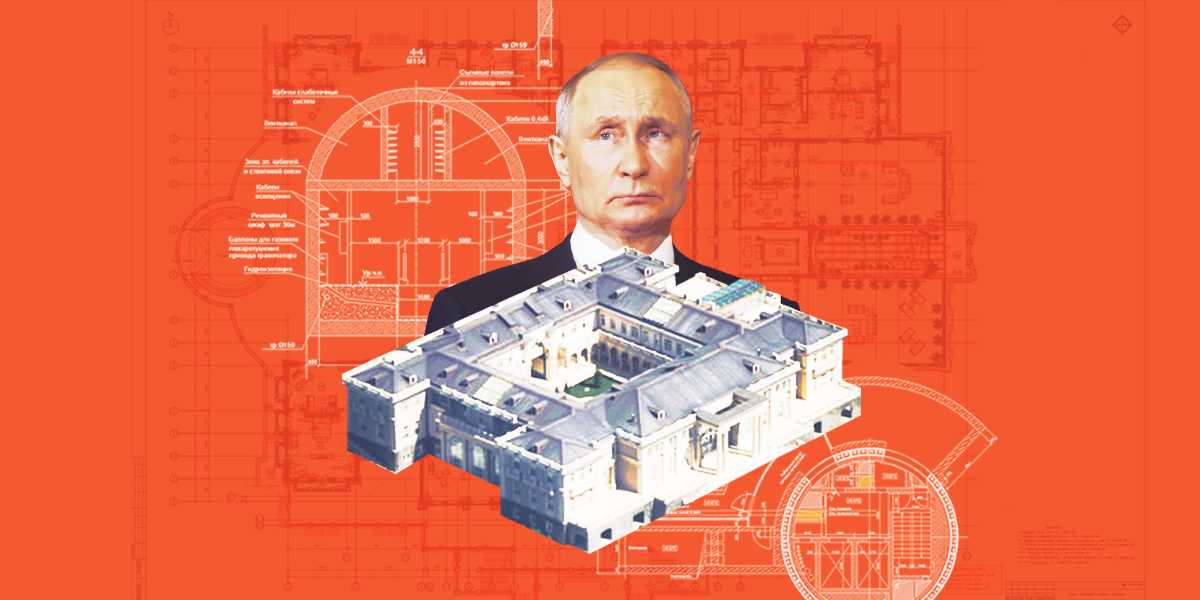
Contributor/Getty Images; FBK; Metro 2000 via Wayback Machine; Alyssa Powell/Insider
You would think that the architects who designed Vladimir Putin's palace thought of everything.
After all, the 190,000-square-foot, billion-dollar complex, perched on a rugged bluff overlooking the Black Sea, has every luxury that an autocrat could possibly desire. As revealed by Alexei Navalny's investigation, the palace has its own church, wine cellar, and casino. It has a hookah lounge complete with a stripper pole, an arboretum, and an ice rink for the hockey games Putin likes to play with cronies. But good luck ordering takeout — security is tight. Putin's imperial dacha is sealed off from the country he rules by 17,000 acres of woodland and a special no-fly zone.
The precautions are more than paranoia on Putin's part. Earlier this month, Russian authorities claimed that two drones had attempted to assassinate Putin in a failed strike that ended in an explosion above the Kremlin.
But, despite all these princely luxuries and castle-like defenses, the palace's builders appear to have neglected one crucial detail. They failed to hide plans showing two elaborate tunnels running beneath the palace complex — plans that any competent state-security apparatus would fight tooth-and-nail to keep secret.
In fact, they were posted publicly to the Russian internet. Metro Style, a now-defunct Russian contractor, posted the diagrams to their website to showcase their work in the early 2010's. They were viewable online as late as 2016.
Today, Insider is publishing annotated versions of the diagrams with English-language translations, which can be viewed below.
The underground complex beneath Putin's palace consists of two separate tunnels connected by an elevator that descends roughly 50 meters below the surface. The architectural plans show the tunnels encased in thick concrete are supplied with enough fresh water, ventilation and extensive cables to support VIP occupants for days or weeks at a time. An expert who reviewed the tunnel plans saw signs of Putin's obsession with survival at a time other strongmen were falling.
"Putin has a lot of anxiety about being the not-entirely-legitimate leader of Russia," said Michael C. Kimmage, a former State Department official who worked on Russia and Ukraine policy. "So knowing that his legitimacy is not entirely secured by elections, he is going to seek to maximize his personal safety through a complex of well-defended personal residences."
The exits from those tunnels are visible just below the palace complex, on the bare cliff rising up from the beach:
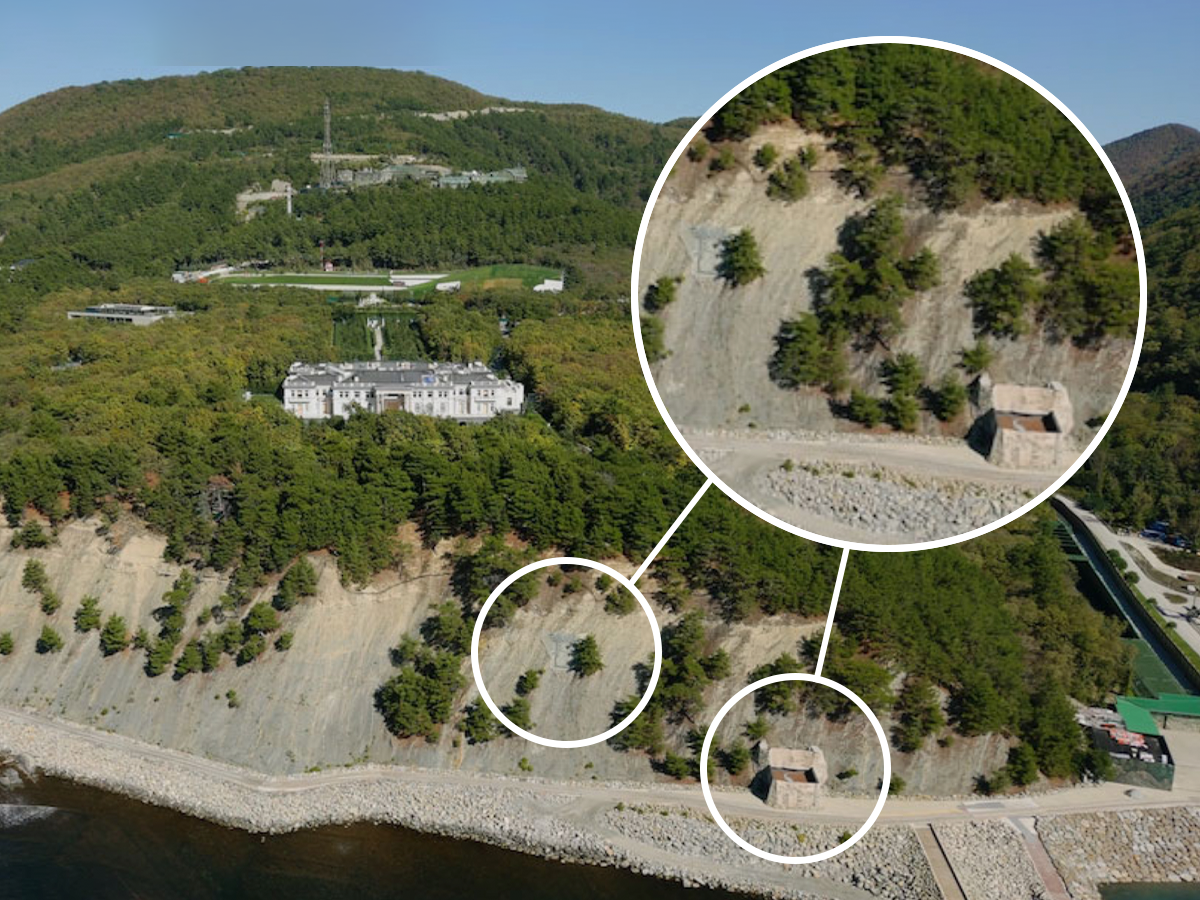
aerial photo by FBK; Insider
The lower tunnel includes a moving walkway leading to the exit. "This tunnel set-up has all kinds of safety and security," said Thaddeus Gabryszewski, a structural engineer familiar with defensive structures who reviewed the diagrams for Insider. "There's a fire system. There's water, there's sewer. This is intended for someone to survive or escape."
All leaders of nuclear states make plans for extreme contingencies. The US president has an emergency bunker beneath the White House, and Mount Weather in Virginia. But unlike US facilities, the Black Sea complex was privately funded and remains privately owned. It appears intended not to insure the continuity of a political system so much as the survival of one individual. Putin's investment in a tunnel complex beneath a brand-new vacation home, built during years when he was still publicly flirting with Russian integration into Europe, is evidence of just how long the Russian leader has been preparing for threats, and building the trapdoors he would need to shelter or escape. "We have to see this as part of a long confrontation with the West that has marked the last 13 or 14 years of Putin's life," said Kimmage.
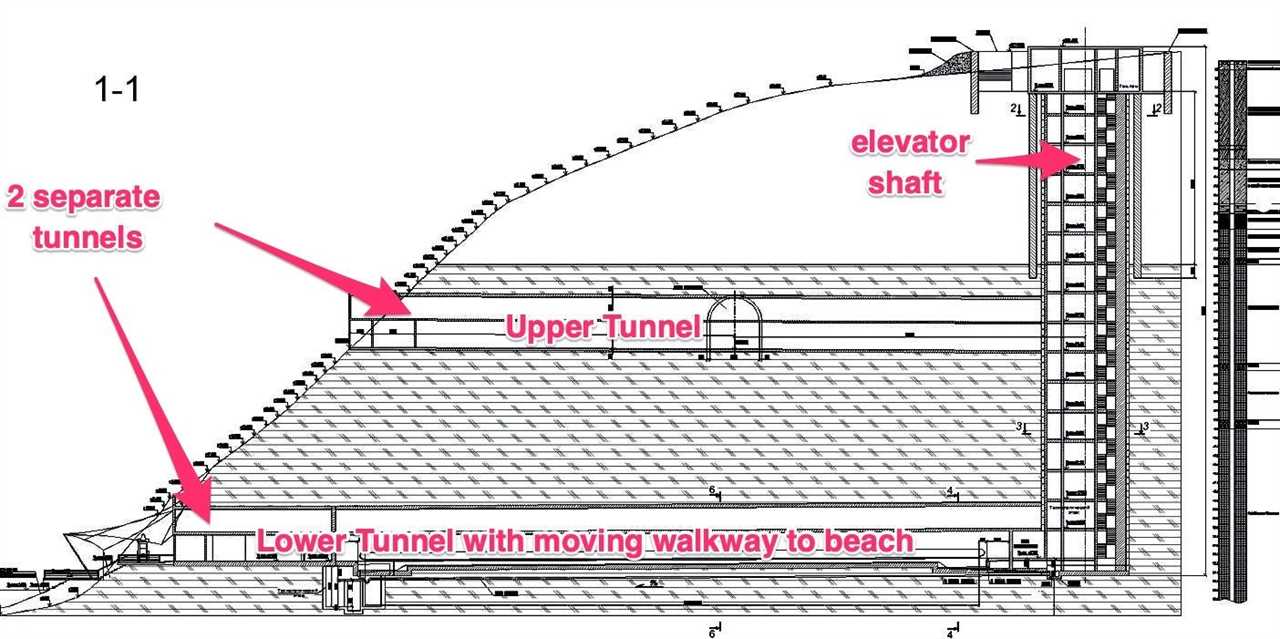
Metro Style via Wayback Machine; annotations by Insider
"These images are not blueprints," Gabryszewski told Insider. "They are closer to architectural drawings. They show you the intent, the flow, and the premise of these spaces."
The two tunnels are approximately 40 and 60 meters long, respectively, and 6 meters wide, creating about 6,500 square feet of potential living space that bears signs of being blast-proof. Their ability to withstand the impact of a nuclear blast or a bunker-buster bomb would depend on two factors that aren't in the diagrams — how the tunnels' 15-inch thick concrete shells are reinforced and the material used to fill the area around them, Gabryszewski said.
They show several features that suggest Putin commissioned the structure with worst-case scenarios in mind. Especially striking are 16 cable racks, each about a foot wide, embedded into the wall of the lower tunnel. These racks are designed for the "conduit" cables that can carry electricity, lighting, copper wire and fiber optic cable needed for a command post.
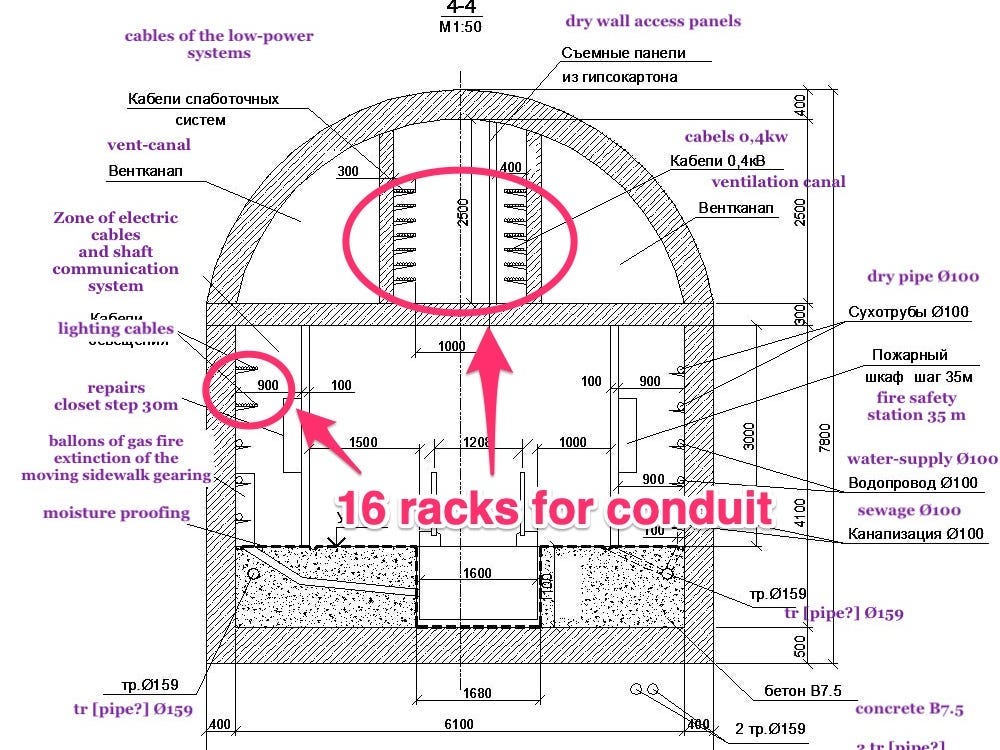
Metro Style via Wayback Machine; annotation and translations by Insider
The sheer volume of conduit running through the lower tunnel is important because it's far more than would likely be necessary to operate the tunnel's own internal systems. "Those trays could be for communications, lighting, power — anything that goes through a cable or tube," Gabryszewski said. "It's an awful lot of cable just for the tunnel itself. So it could be some kind of back-up system for the palace complex." Rather than serving merely as an escape passage, one of the tunnels' purposes appears to be a kind of emergency spinal cord for the entire palace complex.
Neither the Moscow-based company that acquired Metro Style, nor Dmitry Peskov, the Kremlin's chief spokesperson, responded to requests for comment. Amid mass protests triggered by Navalny's 2021 video investigation, Putin denied owning the Black Sea palace.
Metro Style, a company founded in the 90's by three men who have gone on to found several construction companies since, was also hired by the Russian government to dig subway tunnels beneath Moscow. When the company posted the diagrams to their website, they did not specify that the Black Sea tunnels were built for Putin. Instead, they described "a complex of underground structures for a boarding house in the city of Gelendzhik, Krasnodar Territory." Gelendzhik is the town closest to the palace complex, a five-hour drive from the resort city of Sochi.
The existence of the fortified tunnels, nearly 1,000 miles away from Moscow, demonstrates that Putin isn't just focussed on indulging his taste for the high life near a resort town. He is also concerned with staying alive. Survivalism was a likely driver behind the tunnels' remote location, said Kimmage, the former State Department official who is now a professor at Catholic University. "The two times there has been a big transition in Russian history — 1917 and 1991 — the status of the capital city and the leader's position there has been a big issue," Kimmage said. "Putin is solving for that contingency by establishing a network of residences that are as far from the center as possible. So a tunnel system within the Black Sea complex makes a lot of sense. Even without an active threat, he's going to be worrying about this eventuality."
A cutaway diagram showing the interior of the elevator shaft connecting the two tunnels indicates six separate ventilation shafts designed to deliver fresh or filtered air to the tunnel's occupants.
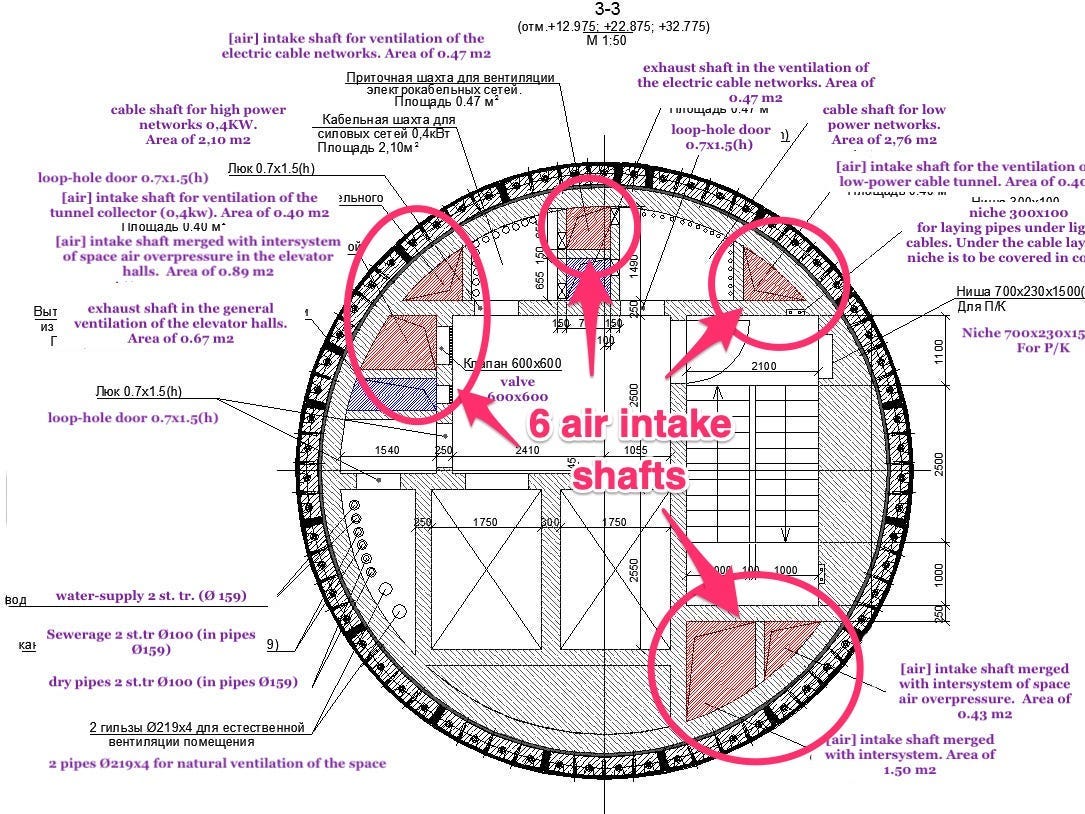
Metro Style via Wayback Machine; annotation and translations by Insider
The multiple ventilation shafts and the two separate tunnels could have been designed with a chemical attack in mind, layering in redundancies that make it harder to wholly constrict the palace's supply of clean air; the multiple cable conduits could serve similar purposes. Two separate portals on the hillside "creates a secondary and tertiary backup for ventilation," said Gabryszewski. "If there's some kind of attack, Putin has got two sources of air intake, one high and one low."
The diagrams do not offer any detailed views of structures to the east of the tunnel complex. Given that it appears to connect the tunnels with a road, it's possible that the eastern structures are designed to be a route through which supplies can be loaded through the hidden elevator and into the palace complex. Gabryszewski highlighted an area near the end of the road, beside the tunnel complex, that could be used for loading and unloading shipments of supplies.
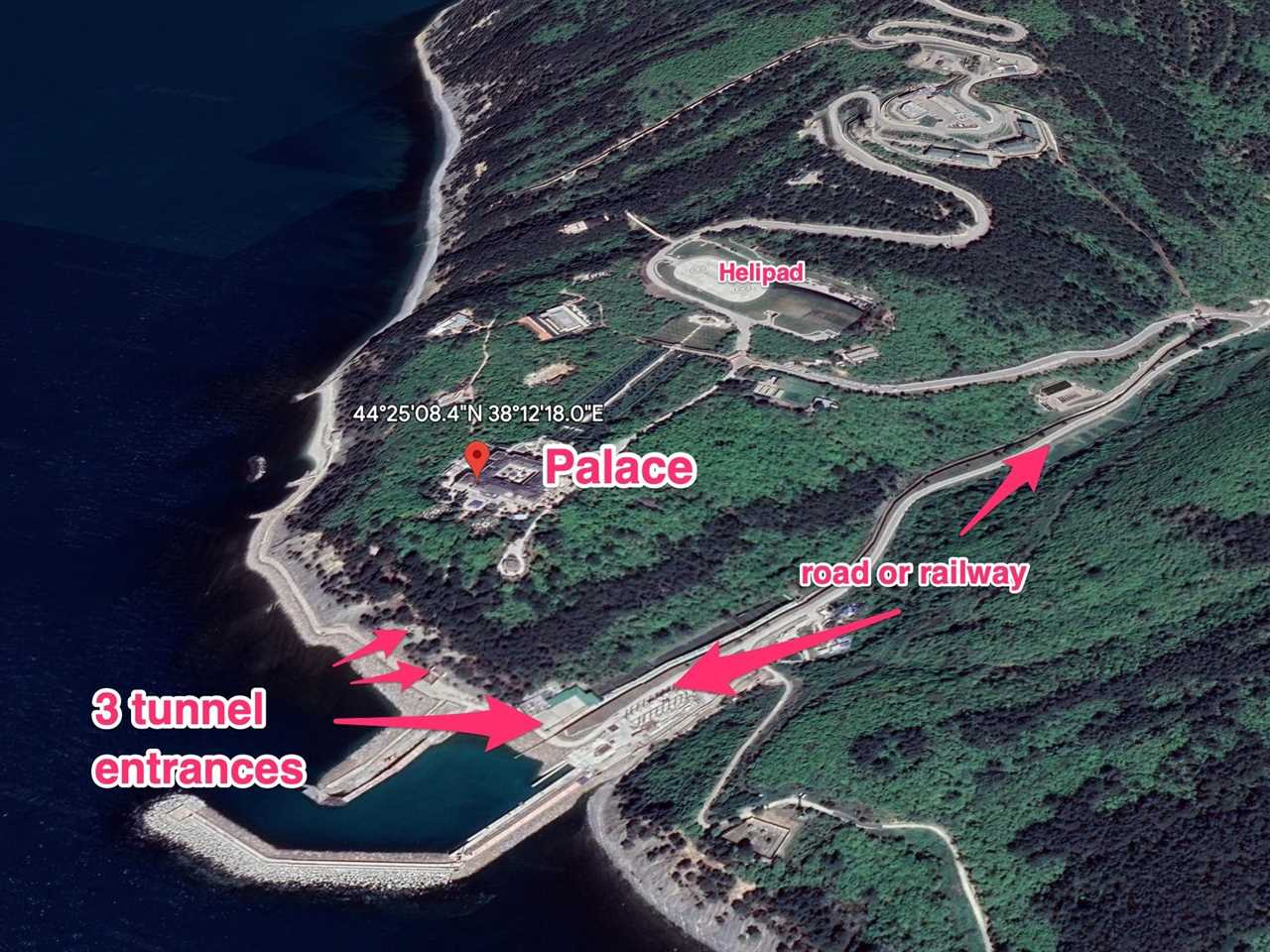
Google Earth; annotations by Insider
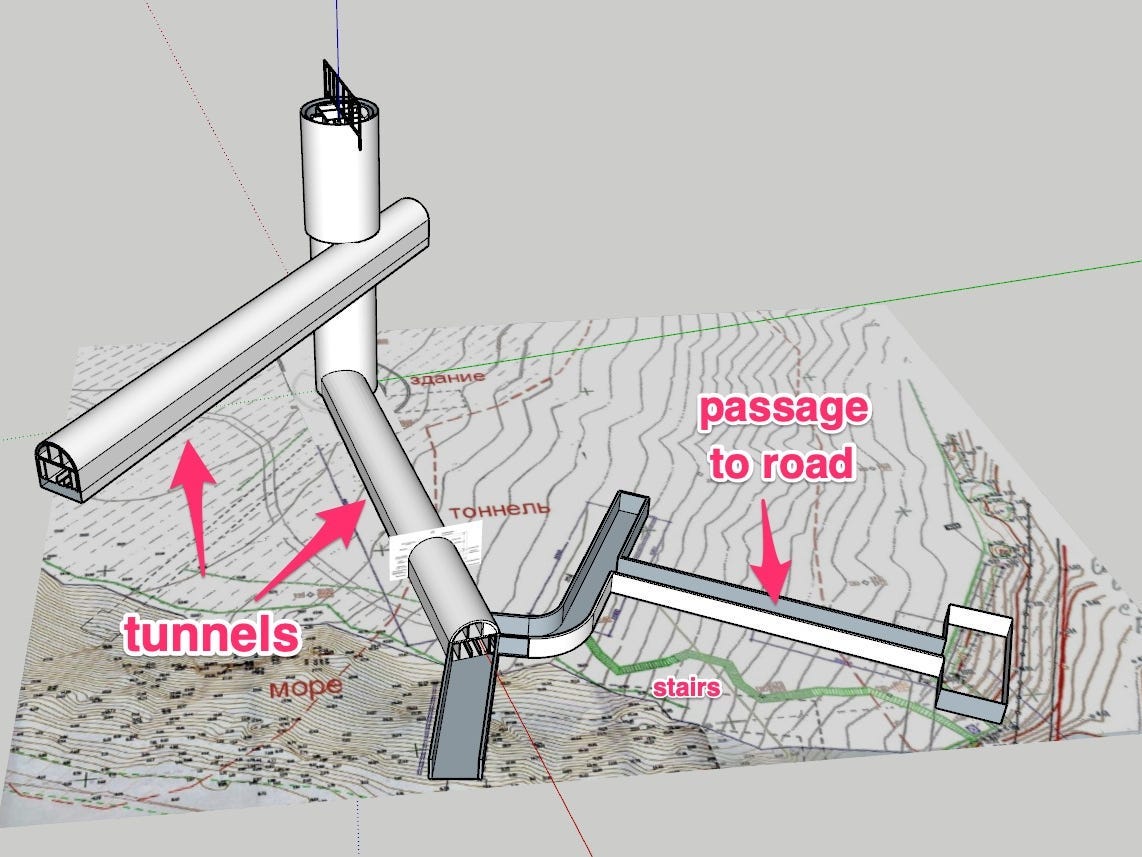
3D model by Sect Ze; annotations by Insider
A link to the diagrams, saved for posterity on the Wayback Machine internet archive, circulated for years among a Moscow subculture known as "diggers," urban explorers who visit and document forbidden sites, before appearing in a comprehensive report on the palace assembled by Navalny, the Russian opposition politician who is now serving a 9-year sentence in a Russian penal colony. The diagrams were first brought to Insider's attention by an anonymous digger who said he was affiliated with a group called "Sect Ze." A spokesperson for the group said in an email exchange that they were sharing their findings "because we are tired of Putin's stupid face and want to show his paranoid underground transport." In a follow-up video call, he said he is speaking up to "bring closer the end of the regime."
Kimmage, the former State Department official, said that Putin's careful preparations more than a decade ago indicate how long his mind has been focussed on the possibility of existential conflict with the West.
"With the war in Ukraine," Kimmage said, "there's speechmaking, there's propaganda, there's exaggeration — there's this performative aspect that plays to Russia's domestic politics. But this is also deadly real. Putin perceives himself as being engaged in a confrontation with the West. The nuclear dimension is an important part of that. He knows he is standing on top of a volcano. He doesn't seem to be so psychopathic as to initiate a nuclear conflict — he has grandchildren — but he's been standing on that edge for a very long time. These tunnels, this bunker, is a part of that."
Mattathias Schwartz is Insider's chief national security correspondent. He can be reached by email at [email protected].
Anastasiia Carrier is a Detroit-based freelance reporter focusing on Russia, disinformation and current affairs. She earned an M.S. from the Columbia University Graduate School of Journalism and her work has appeared in POLITICO, The Wire China and Radcliffe Magazine.
Read More
By: [email protected] (Mattathias Schwartz,Anastasiia Carrier)
Title: Revealed: Vladimir Putin's secret Black Sea bunker
Sourced From: www.businessinsider.com/revealed-vladimir-putins-secret-black-sea-bunker-russia-kremlin-palace-2023-5
Published Date: Wed, 17 May 2023 11:00:00 +0000
.png)





